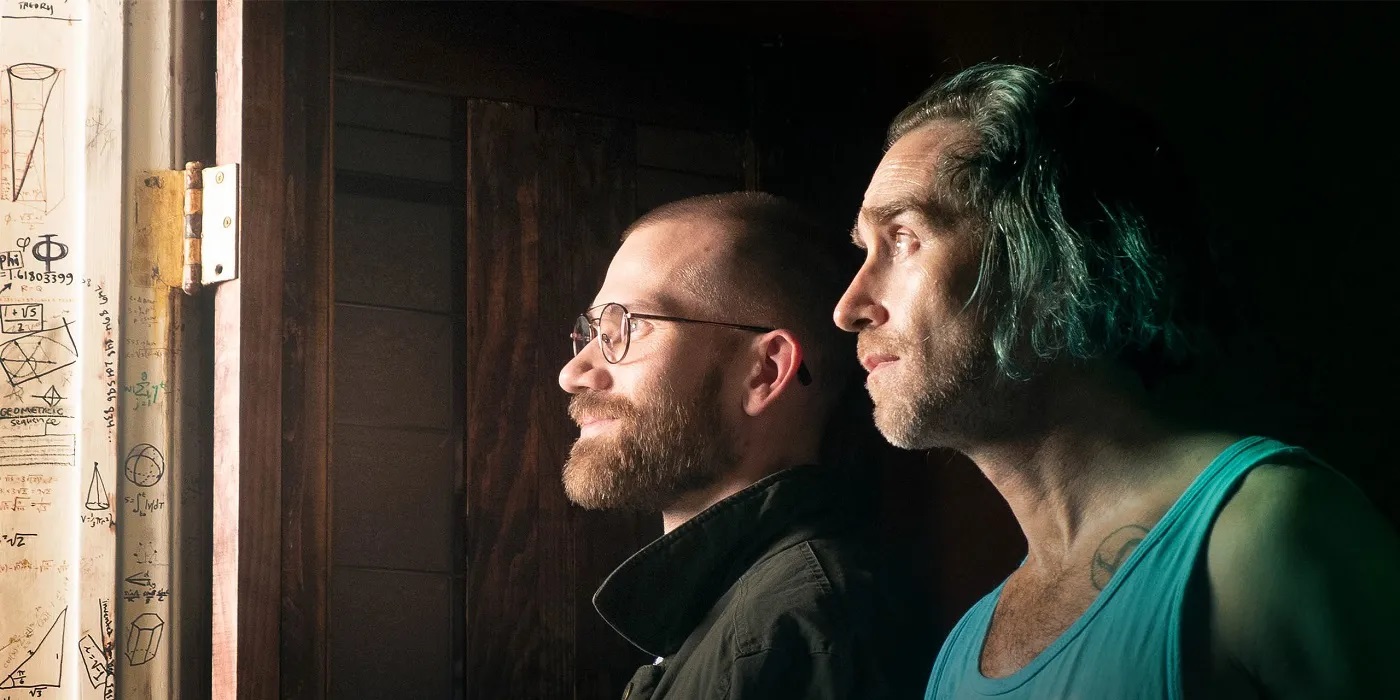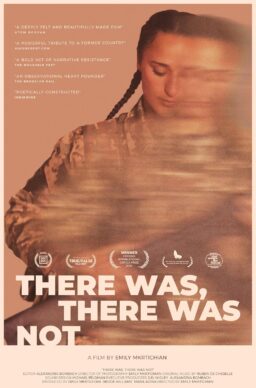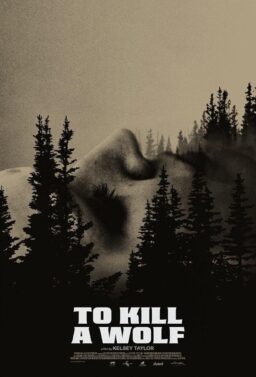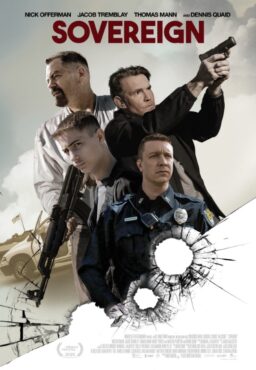Before we even start the interview proper, writer/director/stars Justin Benson and Aaron Moorhead are already breathlessly recounting the story of a bizarre visit to Estonia years prior. There, they followed some strangers back to their place for drinks and conversation; at the end of it, in walks an animal they can only describe as “a hairless, ancient-looking combination of a dog and a cat.”
It’s that awe-struck expression of wonder, that curiosity of the weirdness of the world and the things that lie beyond our ken, that sits at the imaginative heart of “Something in the Dirt,” the fifth feature from Benson and Moorhead. In many ways, it’s a classic entry in their output of trippy, mind-bending dives into the supernatural: their works to date, from the Lovecraftian “The Endless” to the star-filled sci-fi thriller “Synchronic,” follow characters swallowed by their obsessive investigations into the beyond, buoyed by special effects and whip-smart scripts that belie their low budget briefs.
But “Something in the Dirt” sets itself apart in both form and context: shot during COVID (and with all the restrictions therein), the film follows Levi (Benson), a down-on-his-luck schlub moving into a Laurel Canyon apartment complex while he plans his eventual escape from LA. There, he meets his neighbor John (Moorhead), a fellow lost soul looking for companionship (or something to do).
The two get their wish when mysterious objects start floating in Levi’s apartment, and the pair decide to make a DIY documentary about it, leading them down threads that include interdimensional wormholes, gravitic anomalies, and the conspiracies behind the construction of Laurel Canyon itself. Along the way, the documentary they’re making bleeds into the movie we’re seeing until the lines between both become suitably blurred.
It’s a film inextricably born of its COVID-era circumstances: Just two guys, a script, some cameras, and the help and support of a tight-knit group of producers and creatives, including longtime friend and producer David Lawson. And, for its exploration of the way loneliness and isolation can lead us down some spooky modes of thought, it’s a vivid reminder of the social incubators in which dangerous conspiracy theories have gestated the last couple of years.
Around the time of its virtual premiere at the 2022 Sundance Film Festival (Benson and Moorhead’s first), I sat down with Benson, Moorhead, and Lawson over Zoom to ask them about the film’s symbiotic relationship with COVID, the way it approaches LA as a setting for supernatural hijinks, the way DIY filmmaking has changed since they started, and more.

Okay, so COVID hits, and you guys realize you want to do something with this time of isolation and limited resources. What made you decide to make a movie during COVID, and what made you decide to make this one?
DAVID LAWSON: Just like everybody, for the first couple of months, we’re trying to figure out how long this is going to last. So we decided to get something together so as soon as it becomes safe again [to go back to theaters], we’re right out of the gate. We had two projects that were in the final stages of being greenlit that actually got pulled because of COVID. So we think, okay, we could start those back up and have a couple of other things going. Then, as spring turned into summer, we saw that this wasn’t just going away.
Aaron said something the other day that made me chuckle: Talking about it like it’s over is kind of funny, right? Right now, we’re doing this interview not at Sundance.
But as it progressed, one of the big things we keep coming back to is that we always tell people to just go make a movie. People ask us all the time, how do you get your first feature made? I don’t know, just grab a camera! And obviously, our advice is a bit stronger than that. But what it boils down to is this: go make movies with your friends. That’s how we started, and it’s still a lot of what we do. So as we’re going through the summer, Justin and Aaron had been kicking around a version of this for a while, just as most of our projects start as conversations around the bar table until they turn into a script.
We figured that there was a way to take one of our concepts, make it small, make it safe where we could do it with just a couple of people and have it still feel big. My wife was pregnant at the time, so we were trying to be very careful because we didn’t know what the ramifications of COVID were. Then I became certified as a COVID compliance officer, and after we put all our ducks in a row, we figured that there was a world in which we could do this, and shot it in October.
Building the script around these two friends who fall prey to conspiratorial thinking—what was the germ of that? You’ve mentioned elsewhere that “The X-Files” was a huge inspiration for you guys, especially with regards to how those kinds of conspiracies play out in the modern day.
JUSTIN BENSON: It was absolutely inspired by “The X-Files.” But it’s interesting when you call them friends—even when we talk about we’ll even give “two friends” as a logline—but really, they’re more defined by not being friends. And we always wanted to tell a story about that.
We’ve been trying it for over a decade: there was a script, even before we made “Resolution,” about the dynamic of people just having to purely coexist in a messed-up professional relationship, and how you never give that traditional third-act thing where they learn to accept each other’s differences and whatever. There’s obviously some of that in the movie, but I don’t think either one of us would say these guys are friends. Far from it.
As for other things that inspired the script: we were talking before about, you know, giant mutated lynxes, like in “Watchmen.” We’re not specifically inspired by “Watchmen,” but Alan Moore material; the way From Hell treads London, or Jerusalem as it treats Alan Moore’s hometown. He has this way of telling story, where he puts not one, but a million layers of mysticism all through the history of our species. That was something that we’re aiming for with this one, giving that treatment to Los Angeles.

There’s something really specific about the vibe of Los Angeles and the people who live there, and where people are at in their lives in LA; that’s true of Levi, who’s on his way out by the time the film starts. What about LA did you want to express with these characters and the story?
AARON MOORHEAD: It does feel like a lot of the time, LA is just a transitional place for everybody else, though normally, they don’t quite know—ourselves included—where you’re headed off to next. But you make your bacon and then you get to pick what to do, right? Some people genuinely just want a house in the Hollywood Hills. But for us, LA has been presented about 100 billion times on film, and only in a few different ways. There’s Tinseltown, Hollywood, and the dark, grimy, bullet-ridden underbelly. Then there’s something we’ve always felt but never seen depicted, which is this kind of low-end reverberation. The closest thing we could ever point to is “The Big Lebowski,” where there’s just dark shit going on around you and you don’t know exactly what it is.
We built this alternate history around public domain footage and old photos, connecting dots that don’t exist, but wouldn’t it be cool if they did, to build that feeling. We live near the Laurel Canyon area, which has this lengthy history that’s actually mentioned in the movie: people dying there in mysterious circumstances, strange, psychedelic CIA conspiracies, all of that. So we thought that, since it’s actually where we live, our actual setting and everyday life, we wanted to tell a story about that.
What strikes me about this film is that, though there’s a lightness at times to your previous works, this one strikes me as the most overtly comedic. You really blend the horror and supernatural elements you most frequently work in with a kind of screwball bro comedy.
JB: When left unchecked, we just cannot not use a joke. It’s impossible. We’re unconftrollably drawn to deflating a situation with humor. But we knew that if we were going to try to do something like “The X-Files” today, that is put a couple of people diving into a conspiracy and investigating it, that means something very different today than it did in the ‘90s. We we needed to allow ourselves to laugh at them without taking away their humanity or belittling them. When we did that, we could laugh at them just as much as with their investigative techniques.
DL: Yeah, I have plenty of friends who would take non-FDA-approved supplements they could buy at Whole Foods. Yeah, I’d laugh at them, but also I get it.
There’s an underlying tragedy of both of those characters, who have these incredible heartbreaks they bring into their dynamic, which puts them in that vulnerable place.
But in addition to the humor, you also play with form in ways that feel unlike a lot of your works, including the addition of a lot of archival and documentary grammar that changes the form of what the movie is from scene to scene. What led to the decision to blend those two traditions?
JB: We had a lot of long drives to set this year, and in the course of those long drives, we obsessively watched every Errol Morris documentary over and over and over.
Yeah, you can really see that vibe in the way you shot those very serious, straight-on talking head interviews.
AM: Yeah, the documetarian character, both John and the unseen editor characters, though you hear her voice a little bit, take it all very seriously but are a little unnerved. But what’s really interesting is that the movie is, for us, defined by those documentary-style interstitial cuts that allow moments to be deflated or amped up or reflected upon, or contrasted. It was halfway through rehearsal, when we just made a joke about how, during one line, we just cut to this other thing showing what he’s describing. That was the watershed moment for everything, even having to go back to the script and writing this in. “This is the movie!”
All of a sudden, it became a completely different movie. And that’s really exciting, because you can’t do that unless you’re making a tiny movie. It created an additional year of photography on top of the original shoot. It took a very long time to shoot all that documentary. We didn’t even shoot it, David and [production designer] Ariel [Vida] did.
DL: Yeah, I directed it. A lot of that stuff, too, was waiting until we fully locked the edit down to figure out what pieces we were still going to need. There were a bunch of things that got retold or changed or pulled out completely that would have taken significantly longer if we’d shot all of it.
You guys have made quite the name for yourselves as incredible DIY filmmakers, and now you’re making a movie about people who are entering the world of DIY filmmaking. Were there lessons you learned along your own journey that you incorporated into the script for these two amateurs?
JB: To be honest, that was tough narratively, because Aaron’s been making movies since probably before he can remember, and I’ve also been doing it for a very long time. So it was difficult, especially from a modern-day perspective of when we started 25 years ago because the technology is very different. Trying to dramatize green filmmakers, you’re also trying to balance the fact that the general audience knows more about filmmaking technology than ever before, even if they don’t aspire to be a professional filmmaker. So what is the line? At what point are they being unrealistically dumb about it? And where are they suddenly Steven Soderbergh?
AM: Sometimes we wanted to just leave inside-baseball jokes in because they delighted us—like, oh, the movie sells for $10 million at Sundance to Netflix, you know? They made the movie very specific, as opposed to a general idea of filmmaking. That’s why, for example, a wedding photographer would still use this DSLR as a video camera. Now, you can just assume that people know visually that it doesn’t just take pictures. But five years ago, even though it was still true, you couldn’t do it, it would feel weird. You’d just want to switch it to a camcorder.

There’s a line where they try to figure out what shape the documentary’s going to take, and John flat-out says, “I don’t understand YouTube.” And that modern understanding of filmmaking you guys speak of comes a lot from people who’ve grown up on YouTube, which is much different than the more analog school of DIY filmmaking you guys came from.
AM: I think we’re going to fully enter into a new age where basically everyone over the age of eight knows how to edit something on their phone. That’s awesome, but I think there will be vernacular differences between people who aspire to make films and those that aspire to make content. And no judgment on either of them; I just think that, in the same way a book is different from a newspaper, there’s going to be a way to differentiate those two things. We just don’t know how to talk about it yet.
DL: I have a 12-year-old niece and they make content, and I look at what they’re making and they’re already smarter than John and Levi. Because they grew up around this technology, and had access to it at a younger age when your receptors for learning are a bit more attuned.
You love to inject Easter eggs and references to your other works; for example, “The Endless” dovetails into “Resolution” in some very, very direct ways. John himself is a former member of an Evangelical doomsday community that feels a bit like Camp Arcadia from “The Endless.” Is there any connection there?
JB: There is a substantial connection between this and the other movies we’ve made, but to answer your question specifically, John is not part of Camp Arcadia. But there are lots of subtle and not-so-subtle Easter eggs.
I’d also be remiss if I didn’t ask you guys about “Archive 81,” which you directed some episodes for, and at the time of this interview is topping the Netflix Top 10. How does that feel?
JB: Well, we had “Synchronic” at number one on Netflix at one point. Now Aaron has this thing he says to people where he’ll say, “If you work with me, your thing will end up number one on Netflix!” [Laughs.] No, it’s cool when you come direct TV, and you’re special guests of a sort, and we read some scripts that were awesome and love to see it come out into the world and have people dig it.
AM: It’s also fun because it’s been a year, and there are eight hours of scripts to read, and eight hours of content to get the show. The stuff that came after hours, I only read two or three times each; it’s functional for directing episodes three and four, but frankly, after that much time I’d forgotten. So I rediscovered so much in the show as I was watching it; it’s cool to be an actual fan, because my memory works the way a goldfish does.
This is your first Sundance, one still plagued by the conditions that led to this film’s inception two years prior. How does it feel seeing a movie born during COVID conditions premiere in those same conditions?
AM: Justin and I were driving around the other day, and he said something nice. Because we try pretty hard to not take a situation that sucks and put a shine on it, you know? We just prefer to wallow in it and say hey, this sucks. That’s the emotion.
But although COVID took our in-person premiere away from us—and that is the smallest champagne problem of all the problems this mess has created—the film wouldn’t have existed without COVID. We’d be doing something else. It’s a story we would have eventually told in some fashion, on some timeline. But the movie as is, right now, is exactly what we want it to be, with no excuses. And it wouldn’t have, if not for this awful thing that happened in the world.
“Something in the Dirt” will be available in theaters starting November 4th.












